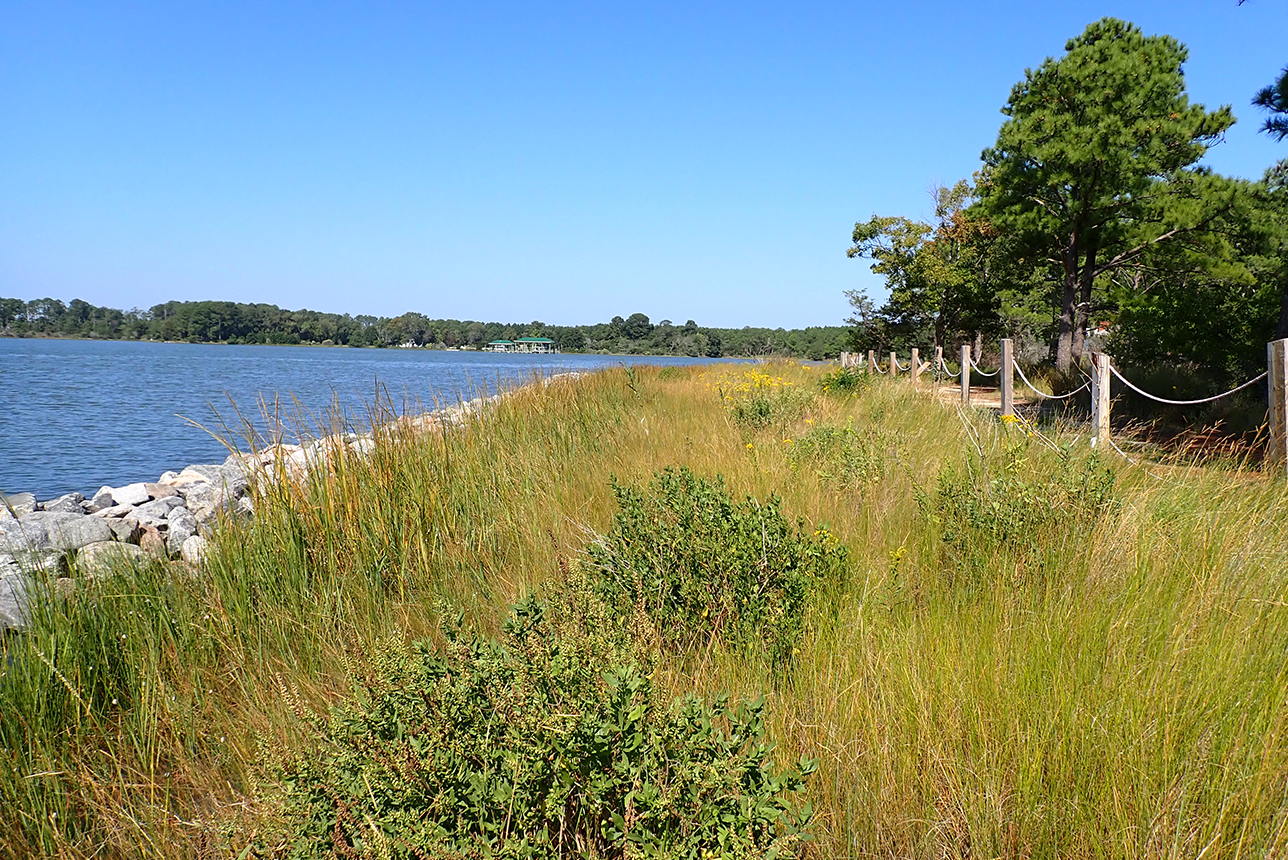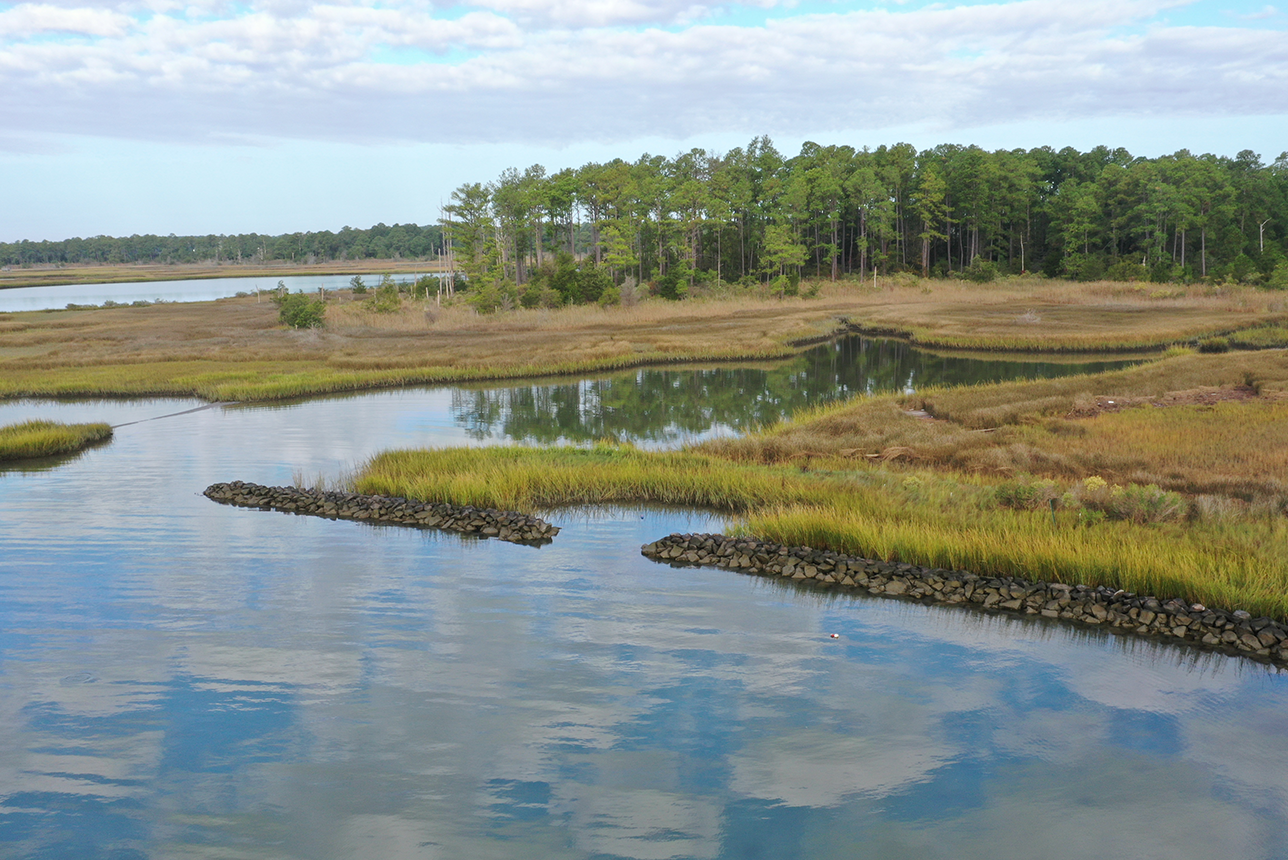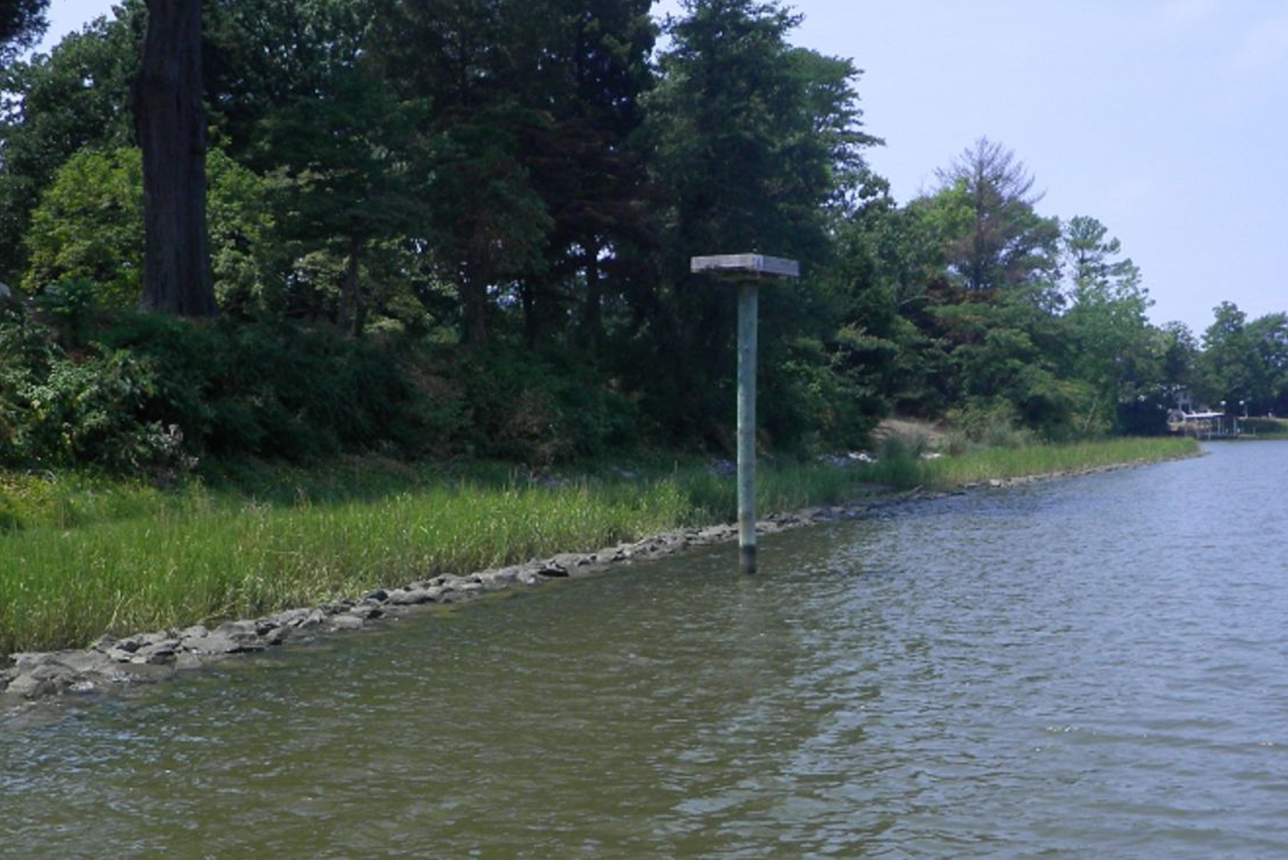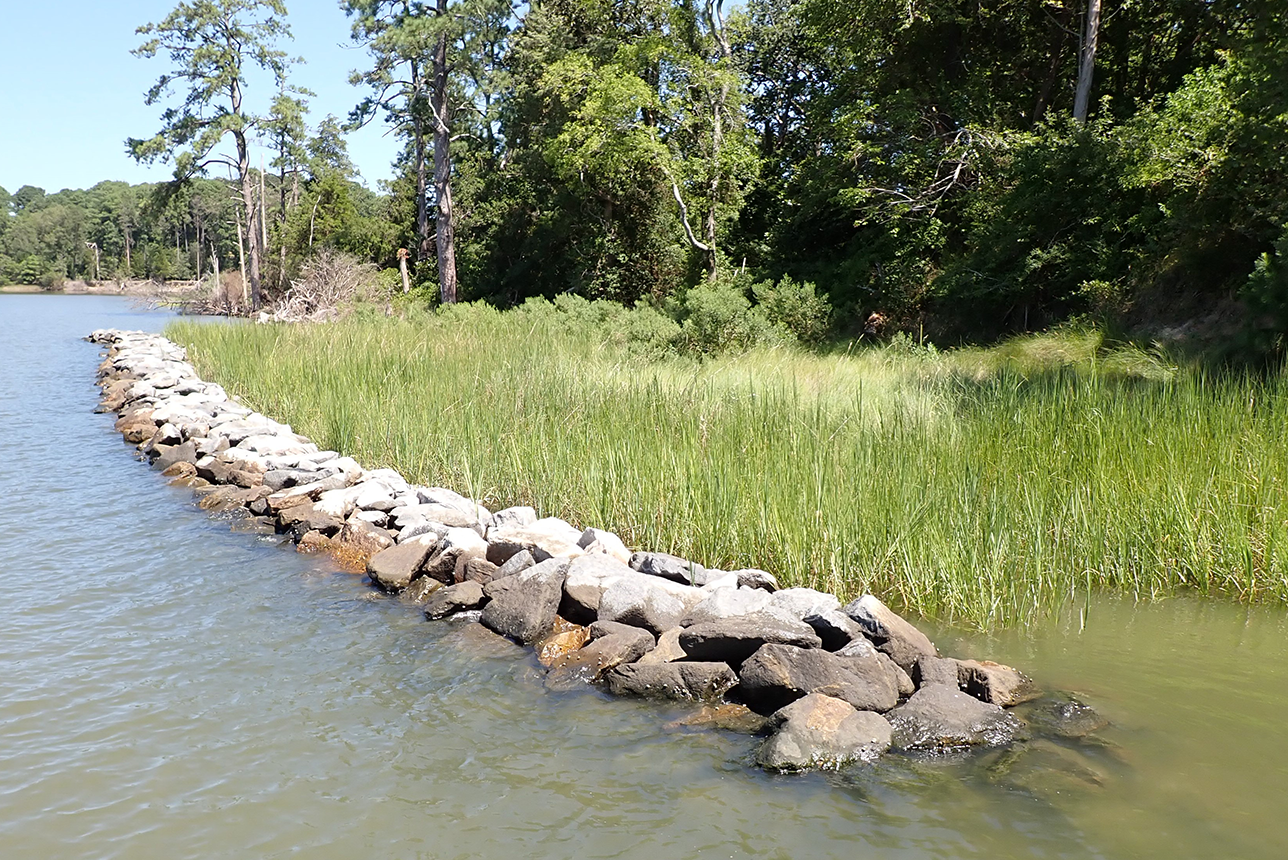Living Shoreline Design Projects

Occohannock on the Bay Camp and Retreat Center
Winner of the 2023 ASBPA Best Restored Shore Award, the living shoreline plan for Occahannock on the Bay (also known as "Camp Occahannock") was developed by the SSP in 2011.

Captain Sinclair's Recreational Area
Located on the Severn River in Gloucester County, Virginia, Captain Sinclair's Recreation Area is a 100-acre tract that was donated to the Middle Peninsula Chesapeake Bay Public Access Authority. The living shoreline project was designed to address erosion as well as provide recreational access to the shoreline. The project was funded by a grant through the Middle Peninsula Planning District Commission from the National Fish and Wildlife Foundation.

Hull Springs Farm
Hull Springs Farm in Westmoreland County, Virginia was obtained by Longwood University in 2000 to serve as a research venue for various subjects including shoreline processes, habitat, and management. The Shoreline Stdies Program created the conceptual design for the living shoreline at this site, which is part of the Lower Machodoc Shoreline Management Plan created by Longwood University and the Northern Neck Planning Commission to provide guidance to homeowners on where living shorelines could be constructed.

Werowocomoco National Park Service
Werowocomoco is located on Purtan Bay on the York River in Gloucester County, Virginia. The 264-acre property has about two miles of open water, tidal shoreline. This SSP living shoreline project addressed erosion of the upland bank in order to protect valuable archaeology at the site and reduce sediment input to the Chesapeake Bay. It created a diverse coastal habitat capable of supporting aquatic, terrestrial, and avian fauna and affords shore and archaeological resource protection from storms and sea-level rise.
Explore More
For the past four decades, the Shoreline Studies Program has been researching the application of nature-based hybrid living shorelines for habitat-friendly shore protection and coastal resiliency. They have worked through the implementation phase to refine designs to minimize impacts while maximizing protection and habitats at high, medium, and low energy sites.

